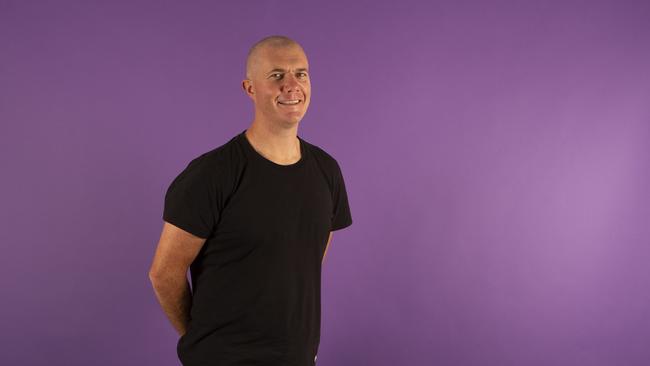Why agility is a fundamental business advantage
For fast-moving companies like Adore Beauty, Iress and Slack, being prepared for disruption is in their DNA.

-
-
When news of the scale of COVID-19 hit Australia, Adore Beauty co-founder Kate Morris started getting bombarded with messages. Senior management at Adore needed to talk through what was happening. Unknowns were everywhere, but Morris wasn’t daunted — it felt much like the early days of founding the company.
“Twenty years of being a bootstrapped start-up has prepared me quite well for disaster and for unforeseen situations, because you’re used to things being really unpredictable and things changing very quickly,” Morris said. “What we do when that happens is we communicate and we collaborate and we look for information, because when there are really high levels of uncertainty, that information is power.”
Her tight knit network of like-minded e-commerce entrepreneurs started getting in touch too, looking for someone to talk through issues with.
“I thought, ‘no, I think we need more than [just a few people]’. And so literally as I was walking to work I thought let‘s get a big Slack channel together. I’ll invite all the people that I know, get all the people they know onto it and, by lunchtime, I reckon we had 50 businesses in there and everybody sharing information,” she said.
Ultimately about 150 online retailers joined Morris’s “war room”, sharing ideas, HR documentation and even transferring staff from companies that had shut down into fast-growing ones.
“I think that really saved our bacon in the early days,” Morris told The Australian’s Fast-Moving Companies panel, in partnership with Slack, which focused on agility as a fundamental competitive advantage.
When COVID hit, financial software company Iress experienced minimal disruption. As a tech business, staff were already primed for working from home, but it was the DNA of the company that was the key ingredient to managing through the crisis, according to CEO Andrew Walsh.

“Change is something you can train for and we’ve been preparing our organisation for change, rapid change, since 2017,” Walsh said. “Once you’re able to change, then you need to keep going. If we’re talking about agility and talking about being future ready, then you have to be prepared for the organisation to be agile as well as the individuals.”
To achieve that agility Iress focuses on two key maxims — access to information and employee autonomy. The company has a flat organisational structure, and Walsh says “it’s pretty hard to find an org chart” as it creates too rigid a structure that puts teams in boxes.
Being an agile and innovative company, you have to have information just pumping through its veins
Instead, the company has created a common vocabulary and vernacular for what it means to get work done and for measuring the output against agreed parameters. The process is designed to empower employees.
“Bureaucracy is the death of agility,” Walsh said. “I encourage all of our people that if there is a stupid process that doesn‘t doesn’t add value or is in the way we should change it. And there are lots of people that can create dumb processes. We have an emphasis on hiring the best people and trusting them to use their skills and their intelligence to make the right decisions.”
Those decisions are based on information that is readily accessible, and not slowly filtered down through a hierarchical system.
“Information is no longer peer to peer. It is simply too slow, whether that is in a business context or in a crisis,” Walsh said. “It certainly can’t flow through a hierarchy, and so the way that teams are formed or the way that information flows has to be much more like a network than being serialised. This idea of network effects for teams to be able to be empowered is actually much stronger than the sense of order and calm that might come through a hierarchy.
“I say all that before I mention technology, because it’s actually not about the tech. The tech is what allows us to put those frameworks in place and get scale and do things easily. And so tools like Slack and JIRA and Zoom are critical in being able to do it but they’re actually not the answer they‘re just enablers.”
While Morris disagrees with completely flat organisational structures, believing that “everyone likes to know who they are reporting to”, she does agree that technology is not the silver bullet to creating an agile organisation.
“No amount of tech is going to make your company actually agile and able to innovate,” Morris said.
“It’s got to be in your culture, so you‘ve got to build an organisation from the ground up to be able to respond when things change dramatically.
“Being an agile and innovative company, you have to have information just pumping through its veins. Otherwise how can you test and learn and iterate if you don‘t have data flowing back to you, in terms of how your customers are responding, or how the needle’s moving in relation to the things that you’re doing.
“COVID was really a time that we needed to amp up that information flow to make sure that everybody across the organisation had access to it, because every department needed to be able to respond differently.”
Arturo Arrarte, Slack’s head of enterprise for Asia Pacific, said freeing information from “command and

control” creates a culture of openness and transparency that will benefit the business.
“(Information) can be debated, there can be two way dialogue, but then the other element is also trust,” Arrarte said. “You need to be able to trust those in the frontline, trust the decisions that they make, and most of the time those decisions will probably be much better.”
But too much information, and information delivered inefficiently was also a problem. Walsh’s response to the idea of more Zoom meetings was “kill me now” and he said that the company has a policy of allowing all employees to decline a meeting invite, even from someone more senior.
“If you’re not going to contribute, or there is no clear agenda or outcome, then you‘re within your rights to say no,” he said.
READ NEXT: Why asynchronous is the future of work
Arrarte said that in an attempt to keep colleagues informed, too much work time was spent in meetings for updates, rather than decision-making.
“We‘re probably using the synchronous methods far too much where we’re sitting in presentations where a pre-read can be sent,” he said. “And then when people jump onto a call, it is all about the discussion. It’s about clarifying questions and debating what’s being presented. As you scale, be careful that you’re not creating this culture of ‘(we had) nine hours of meetings today so therefore it was a productive day’.”
While getting “bogged down” in meetings was an innovation killer for the panellists, another issue was writing status reports.
“Teams should not be sitting around writing reports to educate others about where they are at,” Walsh said, while Morris said software had mostly solved that problem.
“We use JIRA for all of our projects. You can go into it and be able to see exactly where the Christmas campaign is at, the people who need to be involved in contributing to that and exactly who‘s responsible for each subtask,” Morris said.
This distributed way of working is likely to become the norm as companies emerge from COVID-19 says Slack’s Arrarte.
“If you look back to the Industrial Revolution, businesses were being built as machines: how do I produce as many widgets as efficiently as possible? And right now we‘re identifying that organisations need to look more like an organism where it’s evolving, it’s adaptable,” he said.
“Some process, by the way, actually helps do that. It‘s not removing processes, but it’s being smart about how you structure the organisation.”
-
This content was produced in association with Slack. Read our policy on commercial content here.
